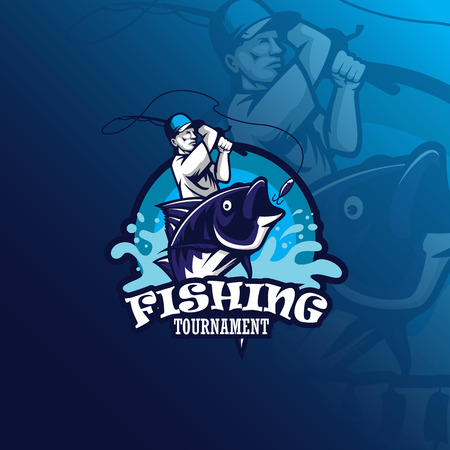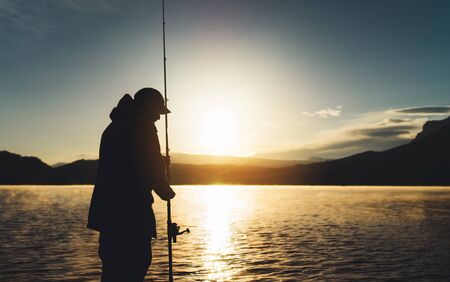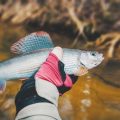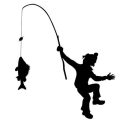Introduction to Pike and Muskie Fishing
If you’re looking to level up your freshwater fishing adventures, Northern pike and muskellunge—better known as “muskie”—are two of the most thrilling targets in North America. These apex predators are legendary for their size, power, and aggressive strikes, turning every encounter into a heart-pounding experience. Anglers from Minnesota to Wisconsin, Michigan to the Canadian border, dream about hooking into these toothy giants. But before you head out to challenge these iconic fish, it’s crucial to have the right gear in your tackle box. Using equipment that’s not up to the task can mean missed opportunities or even broken lines when it matters most. In this guide, we’ll dive into why targeting pike and muskie is such a unique adventure—and why choosing gear tailored to these species can make all the difference between a memorable catch and a disappointing story.
2. Choosing the Right Rod and Reel
When it comes to targeting northern pike and muskie, your rod and reel setup is the backbone of your fishing experience. These fish are known for their size, power, and sharp teeth, so you’ll want a combo that’s both tough and reliable. Let’s break down what to look for:
Rod Length and Strength
The right rod makes all the difference when fighting big predators. For pike and muskie, rods between 7 and 9 feet long are ideal—they give you better casting distance, improved lure control, and more leverage during the fight. In terms of strength, go with a medium-heavy or heavy power rod with fast action. This combination helps you set hooks firmly through bony jaws and handle aggressive runs.
| Fish | Recommended Rod Length | Power | Action |
|---|---|---|---|
| Northern Pike | 7’ – 8’6” | Medium-Heavy to Heavy | Fast |
| Muskie | 8’ – 9’ | Heavy | Fast |
Reel Types That Can Handle the Challenge
Baitcasting reels are the top choice for muskie and pike anglers in the U.S., thanks to their power and control. They’re built to handle heavy lines (think 40-80 lb braid) and large lures without wearing out your hands or gear. Look for baitcasters with a high line capacity, strong drag system (at least 15 lbs), and a solid gear ratio—something in the 5:1 to 6.5:1 range works well for most techniques.
Spinning vs. Baitcasting Reels: Quick Comparison
| Reel Type | Pros | Cons |
|---|---|---|
| Baitcasting | More power, better for heavy lures, precise casting | Takes practice to master, more expensive |
| Spinning | Easier to use, versatile for various species | Less power for big fish, limited line capacity |
Tried-and-True Tip from American Anglers:
If you’re just starting out with muskie or pike fishing, don’t be afraid to visit your local tackle shop—many U.S. shops have staff who are seasoned anglers themselves and can help you find a balanced setup that matches your experience level and local waters.

3. Line Selection: Strength and Material
When it comes to targeting northern pike and muskie, choosing the right fishing line can make or break your day on the water. These toothy predators are known for their brute strength, explosive strikes, and abrasive mouths, so let’s dive into the different types of lines—braid, monofilament, and fluorocarbon—and how to pick the test strength that keeps you in the game when a monster hits.
Braided Line: Power and Sensitivity
Braid is a favorite among many American anglers for muskie and pike fishing. Its main perks? Exceptional strength-to-diameter ratio and zero stretch, which means you’ll feel every nibble and set the hook quickly. A 50-80 lb braided line is common for these giants, giving you confidence even when a trophy fish makes a wild run. However, braid is visible in clear water and can sometimes slip on reel spools if not tied correctly.
Monofilament Line: Forgiving Flexibility
Monofilament (mono) is a classic choice with some real benefits for beginners and pros alike. It’s affordable, easy to handle, and offers just enough stretch to absorb headshakes or sudden lunges from pike or muskie. Mono’s stretch can be a double-edged sword though—it may result in less precise hook sets at long distances. If you’re using mono, go for 20-40 lb test to balance strength and castability.
Fluorocarbon Line: Stealth Factor
Fluorocarbon lines shine in clear lakes where wary fish might shy away from more visible options. They’re nearly invisible underwater and offer solid abrasion resistance—a big plus around rocks or submerged timber. The trade-off? Fluoro tends to be stiffer than mono and pricier than both other choices. Many anglers use fluorocarbon leaders (60-100 lb test) with braid or mono main lines to get the best of both worlds.
What Test Strength Is Best?
For northern pike and muskie, err on the side of heavy-duty gear—these fish don’t mess around! In most American waters, a 50-80 lb braided line or 20-40 lb mono/fluorocarbon mainline paired with a stout leader (at least 60 lb test) will cover you for almost any encounter. Remember: it’s better to be overprepared than undergunned when your dream catch finally bites.
Family Fishing Tip
If you’re hitting the lake with your kids or a first-timer, try starting with monofilament—it’s easier to manage and less intimidating to tie knots with. As everyone gains confidence, experiment with braid or fluoro together—you’ll learn what works best as a team!
4. Essential Lures and Baits
When it comes to targeting Northern pike and muskie, the right lures and baits can make all the difference in your success on the water. These predators are known for their aggressive strikes, but they can also be selective depending on the season, weather, and water conditions. Here’s a guide to some of the top American favorites and tips on how to match your bait to maximize your chances.
Top Lures for Pike and Muskie
| Lure Type | Best For | Why Anglers Love It |
|---|---|---|
| Bucktail Spinners | All seasons, especially summer | Flashy, vibration-heavy; great for covering lots of water fast |
| Spoons | Cooler water, spring & fall | Mimics wounded baitfish, effective at various depths |
| Soft Plastics (Swimbaits, Tubes) | Clear water, pressured lakes | Natural look and movement; versatile presentations |
| Topwater Baits (Walkers, Propbaits) | Warm weather, early morning or dusk | Spectacular strikes; fun for family outings and kids to watch action unfold on the surface |
| Cranbaits & Jerkbaits | Cold fronts, fall turnover | Trigger reaction bites with erratic action; cover different water columns |
Matching Your Bait to the Season and Conditions
- Spring: Pike and muskie are often in shallower waters post-spawn. Use brightly colored spinnerbaits or shallow-running jerkbaits that mimic spawning baitfish.
- Summer: As weed beds grow thick, switch to weedless spoons or bucktails. Topwater lures are also exciting options during low-light periods.
- Fall: Fish move deeper as temperatures drop. Larger swimbaits or deep-diving crankbaits work well when pike and muskie are bulking up before winter.
- Weather Considerations: On sunny days, natural colors tend to work best. On cloudy or stained-water days, go bold with chartreuse or fire-tiger patterns.
Family Tip:
If you’re heading out with kids or beginners, choose lures that are easy to cast and retrieve—like spinnerbaits or soft plastics. Not only do these keep everyone engaged with more frequent strikes, but they also help build confidence for young anglers as they experience the thrill of hooking into a big one!
5. Safety Gear and Extras
When targeting toothy giants like northern pike and muskies, having the right safety gear can make your fishing adventure not only more enjoyable but a whole lot safer—especially if you’re out there with your kids or family! Heavy-duty pliers are an absolute must for unhooking these powerful fish, as their sharp teeth can easily slice through regular tools (and fingers!). Next up, don’t forget a sturdy jaw spreader. These help keep the fish’s mouth open while you carefully remove hooks, reducing both stress on the fish and risk to your hands.
Speaking of hands, invest in puncture-proof gloves. Northern pike and muskies have rows of razor-sharp teeth and gill plates that can do some serious damage during even the quickest hook removal. Good gloves not only protect your skin but also give you a better grip when handling slippery, wriggling fish. And let’s talk about landing nets—don’t skimp here! A large, knotless rubber landing net is essential for safely bringing these beasts into the boat without harming them (or losing them at the last second). The right net reduces tangles and helps keep the fish calm for a smooth release.
While it might seem like “extras,” all this gear really is essential. It makes the experience safer for everyone involved and shows your kids the importance of respecting both the fish and themselves on the water. Safety first makes fishing fun for the whole family!
6. Tips for Family-Friendly Pike and Muskie Adventure
Taking the whole family out for a day of pike and muskie fishing can be an unforgettable bonding experience, but it does require a little extra planning to make sure everyone has fun and stays safe. Here are some tips to help your Northern adventure go smoothly:
Get Everyone Involved in Gear Selection
Make choosing the right gear a family affair! Bring your kids along to the tackle shop or let them help pick out lures online. Letting children choose their favorite colors or styles for lures, hats, or life jackets gives them a sense of ownership and excitement about the trip. Talk about why you need strong rods, sturdy reels, and sharp hooks for these powerful fish—it’s a great way to spark curiosity and teach them about local species.
Keep It Simple and Fun
When fishing with kids, avoid overly complicated set-ups. Use easy-to-handle rods and reels that are appropriate for smaller hands, and opt for pre-tied leaders if possible. Practice casting together in the backyard before your outing—turn it into a game by aiming for targets or buckets! This not only builds confidence but also keeps things lighthearted.
Safety First—Always
Pike and muskie have sharp teeth and can put up quite a fight. Make sure every family member wears a properly fitted life jacket while on the water. Teach kids how to safely handle gear, especially hooks, nets, and pliers. Go over the importance of keeping fingers away from fish mouths and always using a net when landing these toothy predators.
Make Lasting Memories
Bring snacks, drinks, sunscreen, and maybe even a camera to capture those big smiles (and hopefully big fish!). Celebrate each catch—even the ones that get away—and encourage everyone to share their favorite moments on the ride home. By making gear selection part of the adventure and focusing on safety and engagement, you’ll create cherished memories that might just hook your family on fishing for life.


